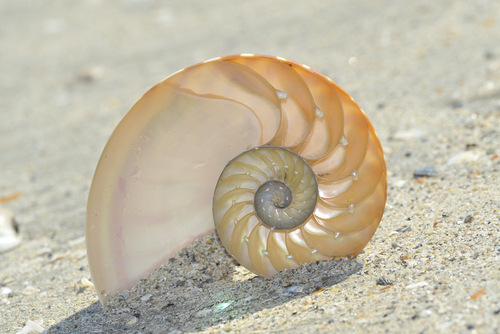From falling snowflakes to our entire galaxy, we count fifteen incredible examples of mathematics in nature!
15 – Snowflakes,
- You can’t go past the tiny but miraculous snowflake as an example of symmetry in nature. Snowflakes exhibit six-fold radial symmetry, with elaborate, identical patterns on each arm. Researchers already struggle to rationalise why symmetry exists in plant life, and in the animal kingdom, so the fact that the phenomenon appears in inanimate objects totally infuriates them.
- Snowflakes form because water molecules naturally arrange when they solidify. It’s complicated but, basically, when they crystallise, water molecules form weak hydrogen bonds with each other. These bonds align in an order which maximises attractive forces and reduces repulsive ones. This is what causes the snowflake’s distinct hexagonal shape.
- As you know, though, no two snowflakes are alike, so how can a snowflake be completely symmetrical within itself, but not match the shape of any other snowflake?
- Well, when each snowflake falls from the sky, it experiences unique atmospheric conditions, like wind and humidity, and these affect how the crystals on the flake form. Each arm of the flake goes through the same conditions, so consequently crystallises in the same way. Each arm is an exact copy of the other.
14 – Sunflowers,
- Bright, bold and beloved by bees, sunflowers boast radial symmetry and a type of numerical symmetry known as the Fibonacci sequence, which is a sequence where each number is determined by adding together the two numbers that preceded it. For example: 1, 2, 3, 5, 8, 13, 21, 24, 55, and so forth.
- Scientists and flower enthusiasts who have taken the time to count the seed spirals in a sunflower have determined that the amount of spirals adds up to a Fibonacci number. This is not uncommon; many plants produce leaves, petals and seeds in the Fibonacci sequence. It’s actually the reason it’s so hard to find four-leaf clovers.
- So, why do sunflowers and other plants abide by mathematical rules? Scientists theorise that it’s a matter of efficiency. In simple terms, sunflowers can pack in the maximum number of seeds if each seed is separated by an irrational-numbered angle.
- The most irrational number is known as the golden ratio, or Phi. Coincidentally, dividing any Fibonacci number by the preceding number in the sequence will garner a number very close to Phi. So, with any plant following the Fibonacci sequence, there will be an angle corresponding to Phi (or ‘the golden angle’) between each seed, leaf, petal, or branch.
13 – Uteruses,
- According to a gynaecologist at the University Hospital Leuven in Belgium, doctors can tell whether a uterus looks normal and healthy based on its relative dimensions – dimensions that approximate the golden ratio.
- Over a few months, Dr Verguts took ultrasounds of 5,000 women’s uteruses and compared the average ratio of a uterus’s length to its width among different age brackets. The data revealed a ratio that is about two at birth. This steadily decreases through a woman’s life until reaching 1.46 during old age.
- Dr Verguts discovered that, between the ages of sixteen and twenty, when women are at their most fertile, the ratio uterus length to width is 1.6. This is a very good approximation of the golden ratio.
12 – Nautilus Shell,
- A nautilus is a cephalopod mollusk with a spiral shell and numerous short tentacles around its mouth.
- Although more common in plants, some animals, like the nautilus, showcase Fibonacci numbers. A nautilus shell is grown in a Fibonacci spiral. The spiral occurs as the shell grows outwards and tries to maintain its proportional shape.
- Unlike humans and other animals, whose bodies change proportion as they age, the nautilus’s growth pattern allows it to maintain its shape throughout its entire life. Imagine never outgrowing your clothes or shoes. You could still be rocking those overalls your mum put you in when you were four years old.
- Not every nautilus shell makes a Fibonacci spiral, though they all adhere to some type of logarithmic spiral. Nautilus aren’t consciously aware of the way their shells grow; they are simply benefiting from an advanced evolutionary design.
11 – Romanesco Broccoli,
- Our next example can be found in the produce section of the humble grocery story. Romanesco broccoli has an unusual appearance, and many assume it’s another food that’s fallen victim to genetic modification. However, it’s actually one of many instances of fractal symmetry in nature.
- In geometric terms, fractals are complex patterns where each individual component has the same pattern as the whole object. In the case of romanseco broccoli, each floret is a miniaturised version of the whole head’s logarithmic spiral. This means the entire veggie is one big spiral composed of smaller, cone-like mini-spirals.
- Although it’s related to broccoli, romanescos taste and feel more like a cauliflower. It’s, of course, rich in vitamins, which is probably why kids hate eating it. Or it could be they subconsciously realise romanescos involve mathematics, and therefore share an association with school.
CLICK HERE FOR THE NEXT PAGE







Great